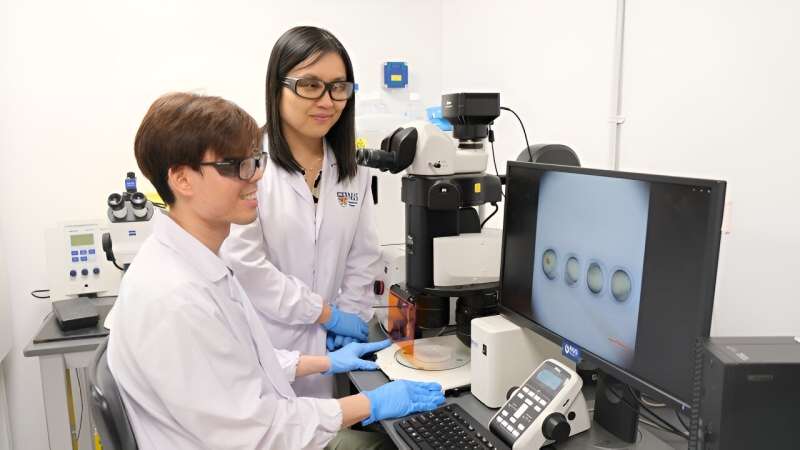This article has been reviewed according to Science X's editorial process and policies. Editors have highlighted the following attributes while ensuring the content's credibility:
fact-checked
peer-reviewed publication
trusted source
proofread
New method of cultivating human norovirus using zebrafish embryo

Food virologists from the National University of Singapore (NUS) have successfully propagated the human norovirus using zebrafish embryos, providing a valuable platform to assess the effectiveness of virus inactivation for the water treatment and food industries.
Human norovirus (HuNoV) is currently the predominant cause of acute gastroenteritis worldwide, contributing to an estimated 684 million diarrhea cases, resulting in 212,000 annual fatalities. For a substantial period, the absence of an in vitro culture system has been a major hurdle in norovirus research. The most recently optimized human intestinal enteroid model, designed to support HuNoV replication, relies on human biopsy specimens obtained from surgical or endoscopic procedures, which are typically scarce. Moreover, the maintenance of these cells is both labor and resource intensive.
A research team led by Assistant Professor Li Dan from the NUS Department of Food Science and Technology, in collaboration with Professor Gong Zhiyuan from the NUS Department of Biological Sciences, serendipitously discovered that zebrafish embryo can be used as a host for cultivating HuNoV. The zebrafish embryo model is easy to handle, robust and has a capacity to efficiently replicate HuNoVs.
This study, to the best of their knowledge, represents an inaugural demonstration of the highest fold-increase over the baseline. Most notably, this model enables the continuous passaging of HuNoV within a laboratory setting. With this model, researchers can effectively propagate and sustain the presence of HuNoV over time, enabling them to study in more depth its behavior, replication, and other properties.
Asst Prof Li said, "The zebrafish embryo model represents an essential improvement in the HuNoV cultivation method. With its high efficiency and robustness, this tool is able to enhance both the breadth and depth of HuNoV-related research. It is expected that this tool will not only benefit the advancement of epidemiological research on HuNoV but will also be invaluable in establishing HuNoV inactivation parameters. These parameters are highly needed by the water treatment and food industries to develop more effective methods for preventing the spread of the virus."
This research was published in the journal Applied and Environmental Microbiology.
In the future, the research team plans to utilize the zebrafish embryo model to investigate inactivation methods for HuNoVs in food products. To date, the successful detection of infectious HuNoV in food products remains an elusive goal. While further refinement and optimization efforts are still required, the research team's ongoing work holds great promise in tackling this challenging task.
More information: Malcolm Turk Hsern Tan et al, Use of Zebrafish Embryos To Reproduce Human Norovirus and To Evaluate Human Norovirus Infectivity Decay after UV Treatment, Applied and Environmental Microbiology (2023). DOI: 10.1128/aem.00115-23
Journal information: Applied and Environmental Microbiology
Provided by National University of Singapore





















